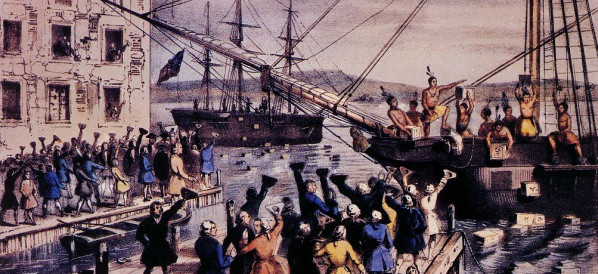 3 Terms
3 TermsHome > Terms > English (EN) > tennis
tennis
Once largely the preserve of white upper-class men and women, tennis has become popularized in the years following the Second World War, influenced by patterns of suburbanization, immigration and technological change.
At the beginning of the 1940s, tennis was still dominated by its country club and amateur image. Leading players like “Big” Bill Tilden, from an elite Philadelphia, PA family, Donald Budge, Jack Kramer and Helen Wills Moody epitomized the “old-stock” immigrant backgrounds of most players. By the early 1950s, many players were being drawn into the professional tournaments dominated by Kramer and Pancho Gonzalez, leaving the Grand Slam tournaments like Wimbledon and Forest Hills dominated by Australian amateurs.
The film Pat and Mike (1952) highlighted some of the changes occurring in American society that would influence the development of tennis. Pat, a women’s college physicaleducation teacher, played by Katharine Hepburn, is snatched up by a sports promoter, Mike (Spencer Tracy), who turns her into a professional sportsperson. The film evokes the transformation occurring from amateurism to commercialism, the increasing marketability of women athletes and the increasing access to tennis available for many Americans at this time that would dramatically increase the popularity of the sport.
Suburbanization accounted for much of this transformation. The migration out of the cities following the world war brought middle-class Americans into close proximity with tennis facilities, which were incorporated into the planning of many of the suburban developments and public school building projects. Elite lawn tennis clubs remained, but their influence declined as more communities played on hard court surfaces.
From the 1960s onwards, therefore, shifts in tennis demography began to occur. More tennis players began to emerge from “ethnic” groups, such as Jimmy Connors and John McEnroe (Irish), Vitas Gerulaitus (Greek)—Stan Smith being the obvious exception to this rule. They no longer graduated only from elite Ivy League universities, but instead were gaining their college playing experience from the large land-grant state universities. They were not merely growing up in Northeastern elite urban communities, but were instead coming from the new Sunbelt states, particularly Florida, where the climate allowed for more professional tennis tournaments and intensive camps, like that of Nick Bollitieri which produced such leading players as Andre Agassi and Aaron Krickstein.
Tennis was slow to have a significant impact on African Americans. Excluded from the United States Lawn Tennis Association, African Americans created their own American Tennis Association. Two products of this development were Althea Gibson, the first African American to compete and win at Wimbledon in 1957, and Arthur Ashe.
But the exclusion of African Americans from much of the process of suburbanization occurring at this time meant that these two players were not followed by others until changing demographic patterns (and Ashe’s efforts to bring tennis to inner-city communities) began to alter these things. In recent years the success of the Williams sisters, Venus and Serena, has increased the visibility of the game among African Americans, including their triumphs at the 1999 US Open and 2000 Wimbledon.
The game has made a lasting impression on gender relations. The leading American women’s player of the early 1970s, Billy Jean King, helped transform the game both through her court performances and her campaigns off the court for reform away from the amateur elitism of the game and for greater gender equity. King was instrumental in bringing World Team Tennis to fruition, encouraging promoters and sponsors, like Texan Lamar Hunt, to pump money into the game, and in challenging the stereotypes regarding women. She also defeated Bobby Riggs in the “Battle of the Sexes” in 1973 at the Houston Astrodome before a worldwide television audience of nearly 50 million and the largest audience ever for a tennis match. King’s straight-sets victory silenced Riggs’ claims of sexual superiority and brought further attention to the women’s game (which now draws more fans than, but still not equal prize-money to, the men’s game).
The late 1970s was notable mostly for the emergence of the naturalized American Martina Navratilova. Czech-born Navratilova developed a game more akin to the men (serve and volley), forcing American baseline players like Chris Evert and Tracey Austin either to improve the power and accuracy of their baseline shots or increase the range of their games. As a result the men’s and women’s games are now closer to each other in style and power than was the case prior to Navratilova’s ascendancy.
The introduction of new rackets in the 1980s and 1990s has radically altered both the women’s and men’s games. Gone are the old wooden rackets, which produced power in proportion to their weight. The new graphite composite rackets are light and powerful, and allow for much greater spin with a flick of the wrist. In part this accounts for the lessening appeal of the men’s game (dominated by Pete Sampras’ power game) as compared with the women’s. The injection of power into the women’s game has broadened its appeal; it is fast killing the men’s as the importance of the serve has increased.
- Part of Speech: noun
- Synonym(s):
- Blossary:
- Industry/Domain: Culture
- Category: American culture
- Company: Routledge
- Product:
- Acronym-Abbreviation:
Other Languages:
Member comments
Terms in the News
Billy Morgan
Sports; Snowboarding
The British snowboarder Billy Morgan has landed the sport’s first ever 1800 quadruple cork. The rider, who represented Great Britain in the 2014 Winter Olympics in Sochi, was in Livigno, Italy, when he achieved the man-oeuvre. It involves flipping four times, while body also spins with five complete rotations on a sideways or downward-facing axis. The trick ...
Marzieh Afkham
Broadcasting & receiving; News
Marzieh Afkham, who is the country’s first foreign ministry spokeswoman, will head a mission in east Asia, the state news agency reported. It is not clear to which country she will be posted as her appointment has yet to be announced officially. Afkham will only be the second female ambassador Iran has had. Under the last shah’s rule, Mehrangiz Dolatshahi, a ...
Weekly Packet
Language; Online services; Slang; Internet
Weekly Packet or "Paquete Semanal" as it is known in Cuba is a term used by Cubans to describe the information that is gathered from the internet outside of Cuba and saved onto hard drives to be transported into Cuba itself. Weekly Packets are then sold to Cuban's without internet access, allowing them to obtain information just days - and sometimes hours - after it ...
Asian Infrastructure Investment Bank (AIIB)
Banking; Investment banking
The Asian Infrastructure Investment Bank (AIIB) is an international financial institution established to address the need in Asia for infrastructure development. According to the Asian Development Bank, Asia needs $800 billion each year for roads, ports, power plants or other infrastructure projects before 2020. Originally proposed by China in 2013, a signing ...
Spartan
Online services; Internet
Spartan is the codename given to the new Microsoft Windows 10 browser that will replace Microsoft Windows Internet Explorer. The new browser will be built from the ground up and disregard any code from the IE platform. It has a new rendering engine that is built to be compatible with how the web is written today. The name Spartan is named after the ...
Featured Terms
American Revolutionary War
The American Revolutionary War (1775–1783), the American War of Independence, or simply the Revolutionary War in the United States, was the military ...
Contributor
Featured blossaries
tim.zhaotianqi
0
Terms
40
Blossaries
4
Followers
CORNING Gorilla Glass
 5 Terms
5 TermsBrowers Terms By Category
- American culture(1308)
- Popular culture(211)
- General culture(150)
- People(80)
Culture(1749) Terms
- Body language(129)
- Corporate communications(66)
- Oral communication(29)
- Technical writing(13)
- Postal communication(8)
- Written communication(6)
Communication(251) Terms
- General astrology(655)
- Zodiac(168)
- Natal astrology(27)
Astrology(850) Terms
- Digital Signal Processors (DSP)(1099)
- Test equipment(1007)
- Semiconductor quality(321)
- Silicon wafer(101)
- Components, parts & accessories(10)
- Process equipment(6)
Semiconductors(2548) Terms
- Wine bottles(1)
- Soft drink bottles(1)
- Beer bottles(1)



